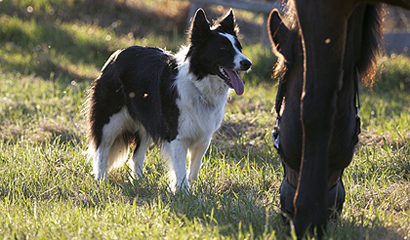
Protect your pet from ticks
Ticks are arachnids that latch onto their host and survive by consuming the host’s blood
Remove ticks as soon as possible
Although no one likes to pull ticks off their pet, it’s important to do so as soon as possible. Immediate removal is the best way to decrease the chance of your pet contracting a tick-borne illness.
It’s a common scene in Saskatchewan – you let your dog out for a romp in the woods and then spend the next half hour searching for ticks. These little arachnids will happily make their home on anything with blood – you, your dog, your cat, your horse, your snake. No creature is safe from their bites.
If you find a tick on your pet:
- put on disposable gloves (if available)
- Separate the fur around the tick, and then use clean tweezers to grab the tick’s head as close to your pet’s skin as possible. Pull upwards — avoid twisting or bending since some parts of the tick could be left in your pet’s skin. If the tick’s head is left embedded in the skin, it can cause infection.
- Clean the tick bite area with isopropyl alcohol or soap and water. To kill the tick, place it in a small container of isopropyl alcohol. Keep the container in case your pet shows any clinical signs of infection.
- Watch your pet closely over the next few weeks. Look for infections and skin irritations near the bite area. Watch for any changes in your pet’s behaviour, appetite or mobility. If you note any changes, contact your veterinarian.
- Ask your veterinarian about “spot-on” medications that repel or kill ticks after they bite.
- Avoid areas with long grass or dense bush where ticks are usually found.
Types of ticks
The wood tick (dog tick) is the most common tick found on the Canadian Prairies. It does not carry bacteria that can cause illnesses such as Lyme disease. The blacklegged tick (deer tick) is the species responsible for carrying Lyme disease. Fortunately, it’s not commonly found on the Prairies — but rare exposures have occurred.
Symptoms to watch for
Lyme disease and other tick-borne illnesses can cause a variety of health problems for your pet, and there are symptoms that owners can watch for:
- generalized symptoms of illness – lethargy, loss of appetite, fever
- owners of short-haired dogs may notice a rash
- affected dogs will often show symptoms of joint disease: limping, stiffness and reluctance to move.
Luckily, few pets that are infected with Lyme disease get sick, and simple tests are available for those that do become ill. Veterinarians can take a blood sample from your pet and quickly test it for tick-borne illness. Further tests may be run to confirm the diagnosis, after which treatment will begin.

